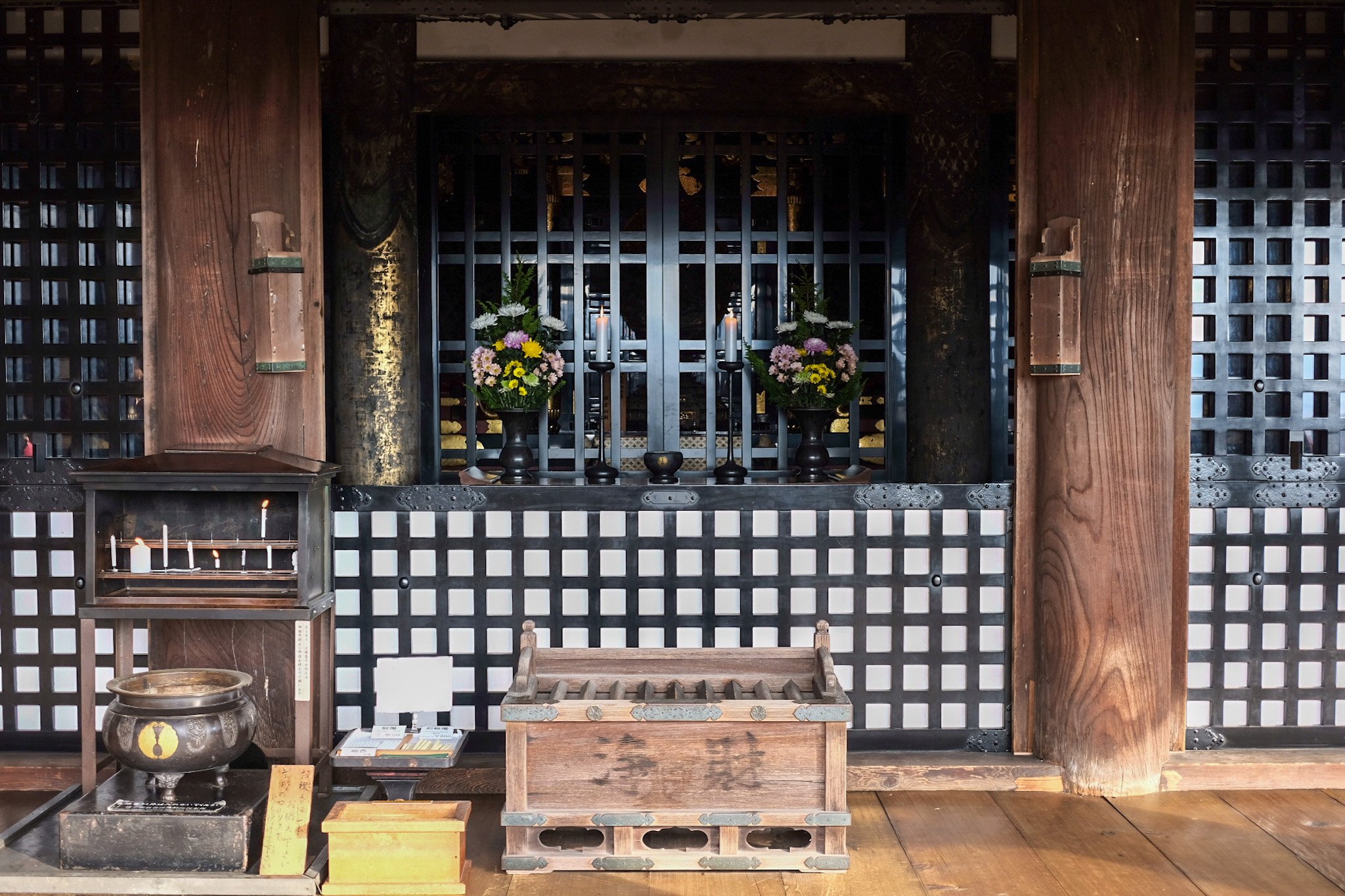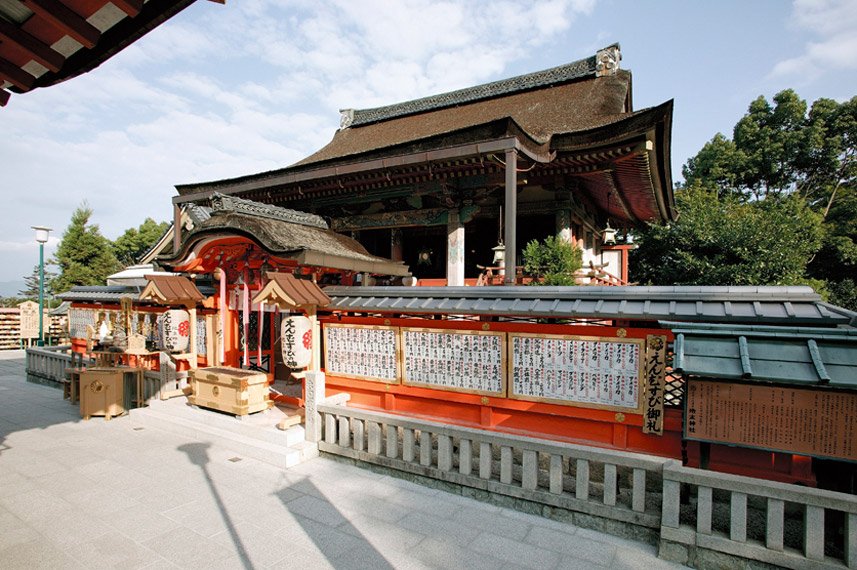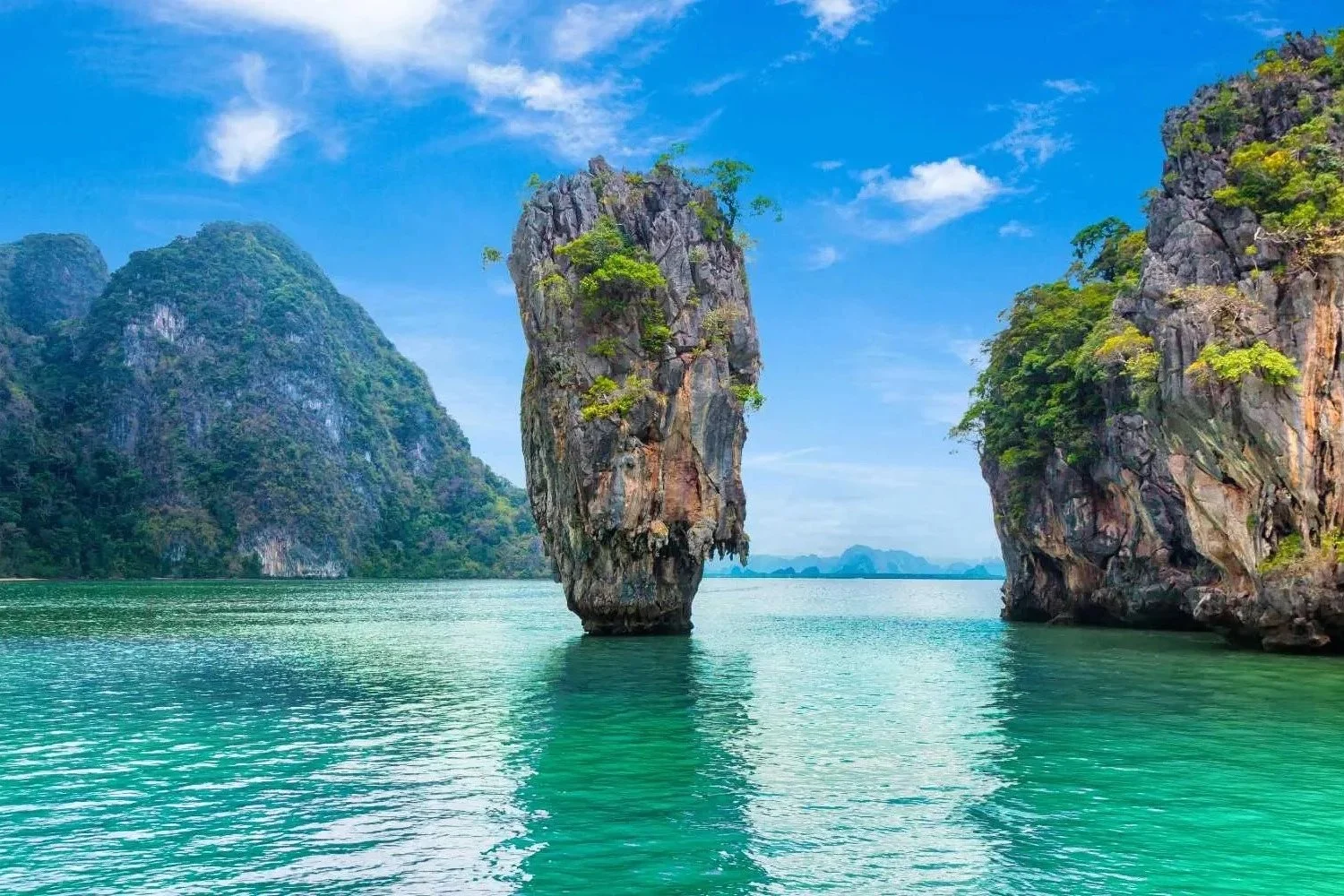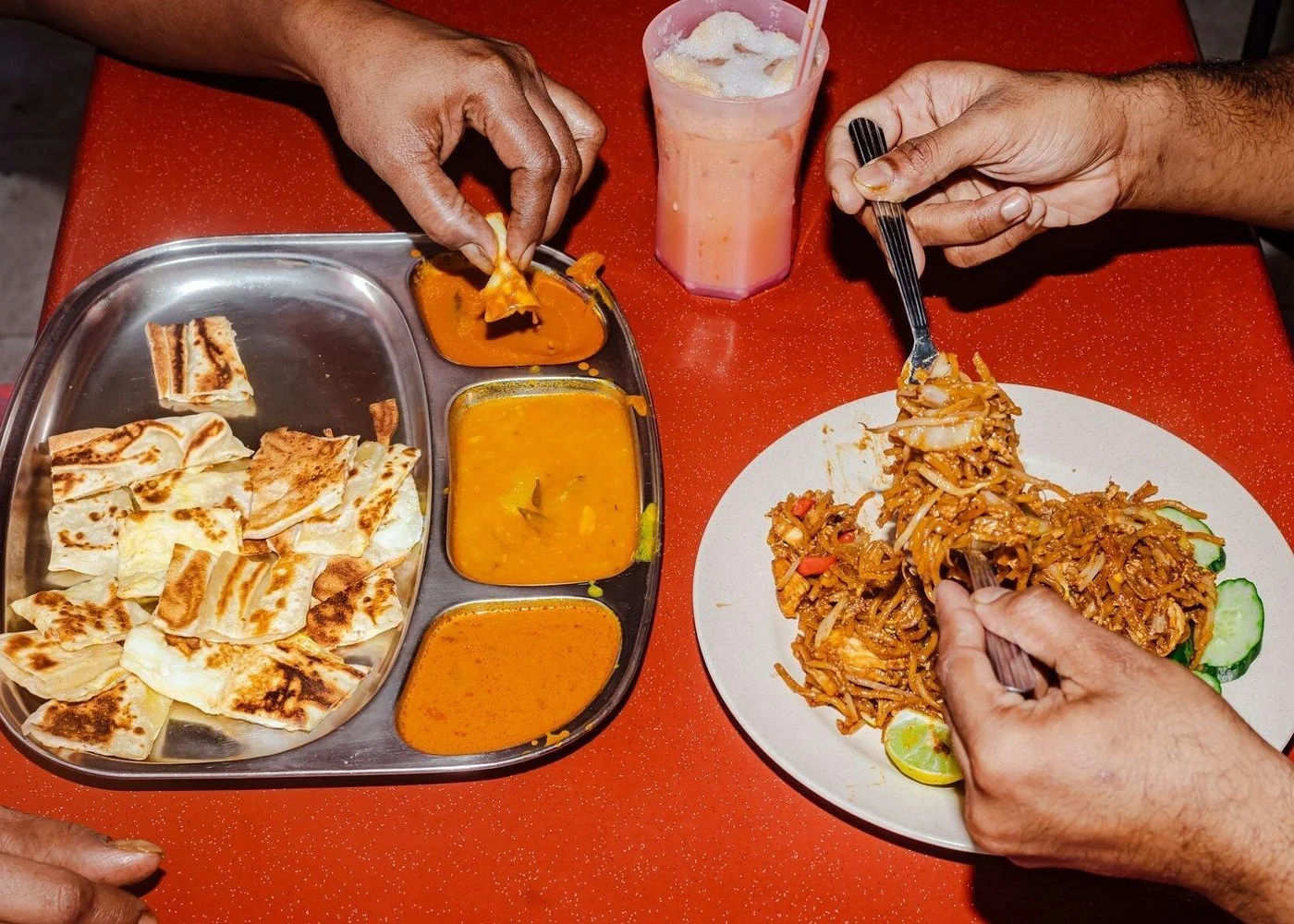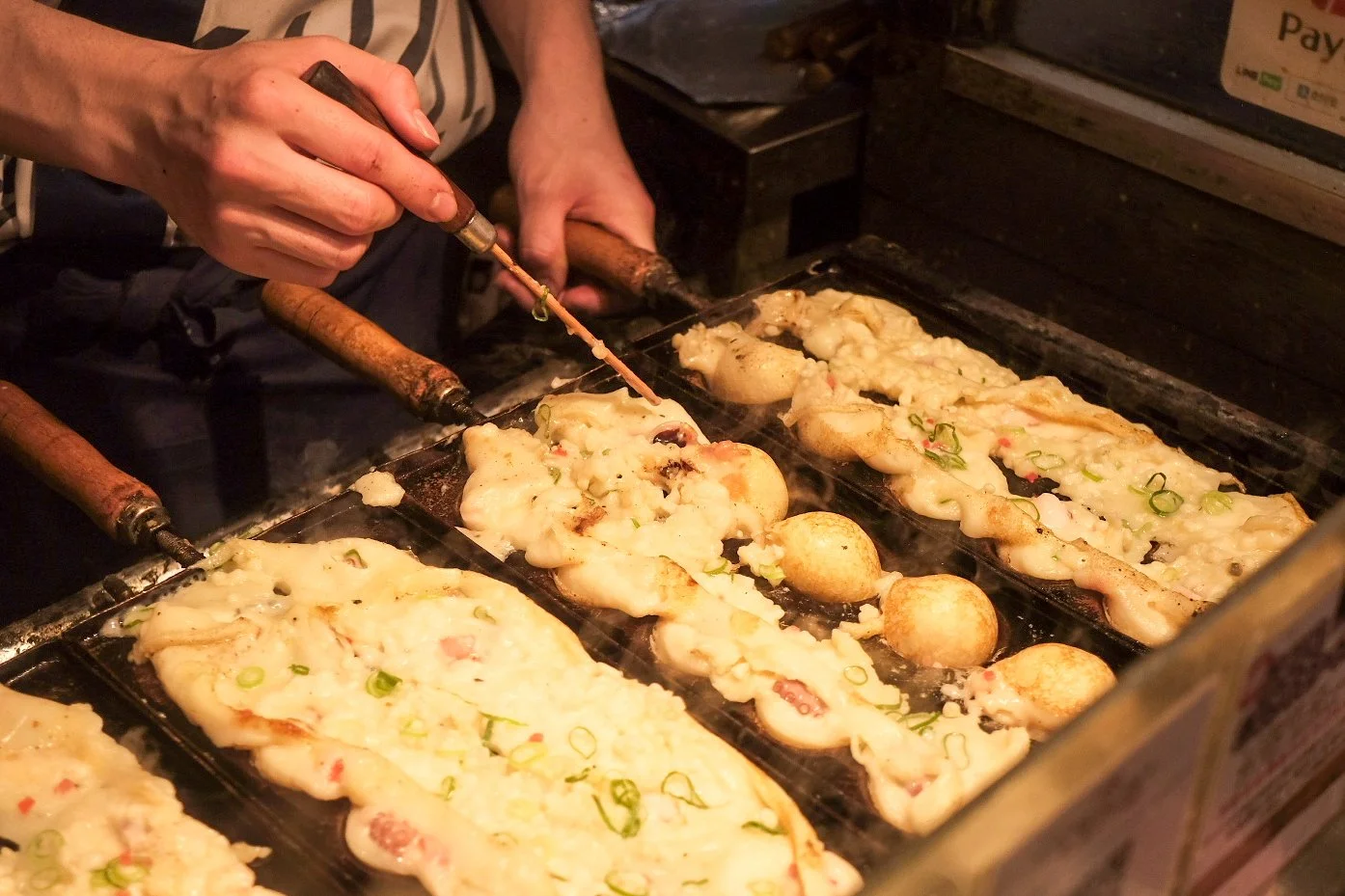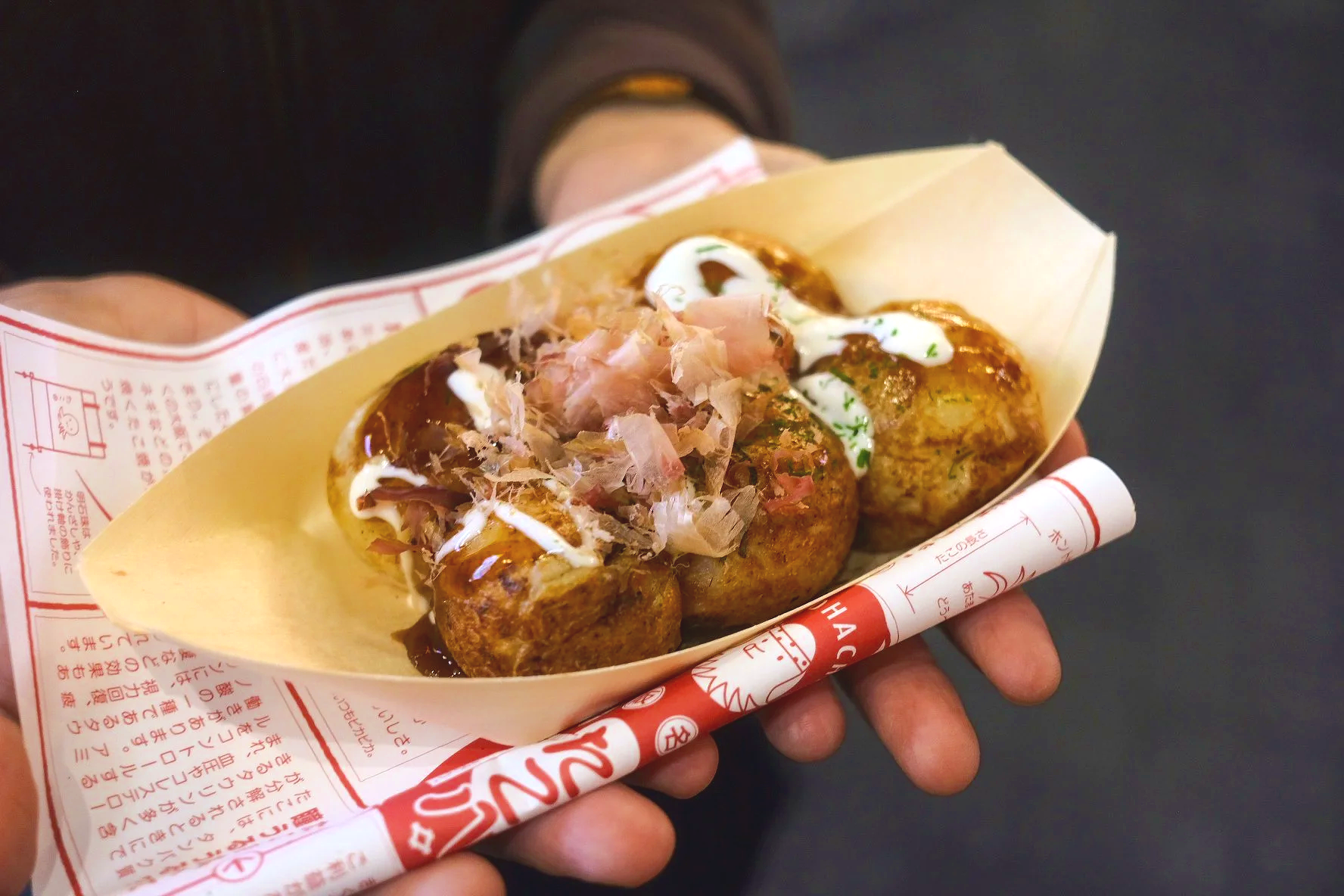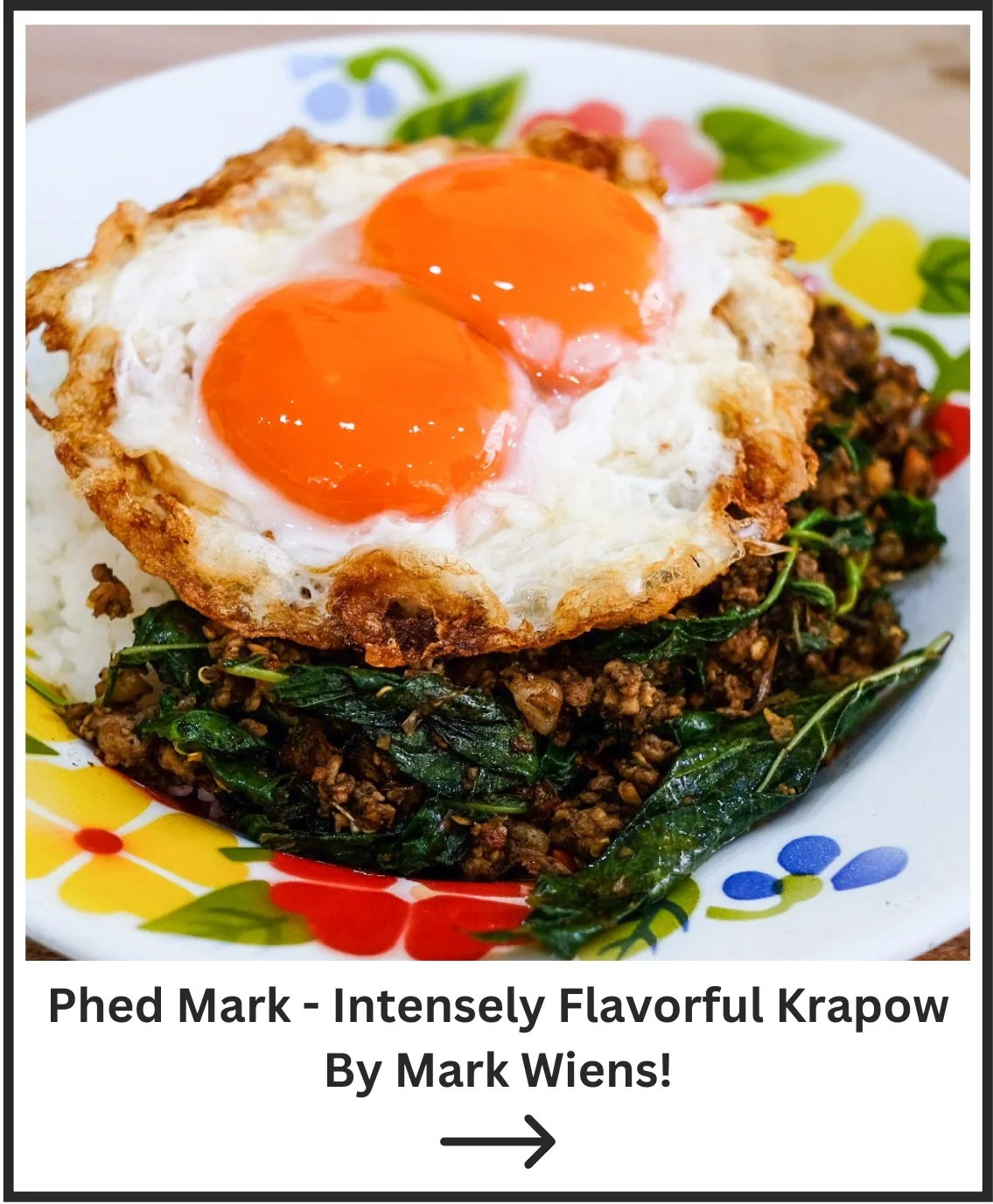Exploring Kiyomizu-dera: Kyoto’s Iconic Temple in the Clouds
Kiyomizu-dera is a truly a sight to behold, it feels like I am in a Japanese fairy tale
There are many things to do in Kyoto, the ancient capital of Japan, but if you miss out on the gorgeous Kiyomizu-dera, the “Pure Water Temple”, your holiday to Kyoto won’t be complete. Perched atop the city of Kyoto and surrounded by a vast cherry blossom ocean, Kiyomizu-dera is a top Kyoto attraction especially during spring and early winter when the cherry blossoms are in full bloom.
This is actually my second time visiting Kiyomizu-dera, the first was around ~2018 back during the winter. At the time the main temple hall was undergoing renovations so large portions of the temple was covered in scaffolding, the visuals were disappointing to say the least. Fast forward to now Kiyomizu-dera is fully complete and displays herself in all her beautiful glory.
So, join me as I take you to explore Kiyomizu-dera, one of Kyoto's most famous temples, and explore what makes it a top tourist attraction in the city. From its intricate and stunning wooden terrace to the sacred Otowa Waterfall that runs through the whole temple complex, there’s so much to discover at Kiyomizu-dera!
Check out my other Kyoto blog posts!
Amazing 3 Day Kyoto Itinerary, Things to Do in Japan’s Ancient Capital!
Kyoto’s Ninenzaka and Sannenzaka, Walking Through Ancient Alleys
Visiting Fushimi Inari Taisha, 10,000 Torii Gates at this Famous Kyoto Temple!
Affiliate Disclaimer: This page contains affiliate links. By clicking on the links and purchasing the product, I will receive a partial commission at no cost to you. All of these products are ones that I fully trust and recommend with my heart. Thank you for your support!
Kiyomizu-dera, Kyoto’s Pure Water Temple
The west gate of the Kiyomizu-dera complex, Sai Mon
Kiyomizu-dera actually has a long history spanning back to over 1200 years, it’s construction was completed sometime in the 8th century AD during the early Heian Period, this makes Kyoto temple one of the oldest and most historically significant in the area.
Kiyomizu-dera was established by the monk Enchin, and this Kyoto temple is dedicated to the deity, Kannon, which is the Japanese Buddhist Goddess of Mercy. Later on a local lord, Sakanoue no Tamuramaro, help funded the construction of the temple.
Actually, what you see nowadays isn’t actually the original iteration of Kiyomizu-dera since the original has been burned by numerous fires throughout its lifetime. The temple that you’ll see now is a reconstruction that was commissioned in 1633 by 3rd Tokugawa Shogunate during the Edo Period.
And in the modern day, Kiyoimzu-dera is regarded as a UNESCO World Heritage Site.
The Meaning Behind the Name "Kiyomizu-dera"
That’s a lot of people lining up to buy tickets
Kiyomizu-dera stands for “Pure Water Temple” and this name comes from Otowa Waterfall whose streams run through the temple’s main hall.
The Japanese word “Kiyomizu” translates to “Pure water” and this comes from the belief that the water flowing from the Otowa Waterfall symbolizes purity, clarity, and most importantly spiritual cleansing. The water running under Kiyomizu-dera is divided into 3 streams each with their own meaning: Health, Love, and Academic Success.
When exploring Kiyomizu-dera, you’ll have the chance to actually drink from these streams of water, which I’ll show you further below.
Architecture of Kiyomizu-dera Temple
The main Hondo hall can support so much weight
Kiyomizu-dera is actually very large, the complex covers an area of about 130km² and consists of about 30 individual buildings but of course the most famous building is the main temple hall known as the Hondo.
Now you might think that wooden architecture is kind of boring, but listen to this: the main hall, supported by 13 meter tall wooden pillars, are constructed entirely without a single nail, glue, nuts, or bolts. That is crazy.
Imagine that, 13 meters above ground, surrounded by a sea of sakura cherry blossoms in full bloom. The Japanese architects are on another level.
Jumping off the Terrae of Kiyomizu-dera!
There is a actually a famously morbid Japanese phrase that people often say when talking about Kiyomizu-dera: “Kiyomizu no butai kara tobioriru”. This translates to “to jump off the terrace at Kiyomizu”.
Now, you aren’t allowed to actually jump off the terrace, I don’t even know why you would because you’ll likely die from the fall… But this phrase originated during the Edo Period when it was believed that if you survived the 13 meter fall from Kiyomizu-dera’s main stage, your wish would be granted.
I think to date, there has been about 200 people who have jumped off and survived. But please don’t go jumping off the terrace.
There is actually a walkable path if you want to explore the entire Kiyomizu-dera complex, but it could be a little tiring and confusing, consider taking a Guided Kyoto Day Tour, these tours will bring you to all of Kyoto’s key highlights such as the Fushimi Inari Shrine, and the Bamboo Forest Trail, of course the Kiyomizu-dera is also in the itinerary :)
Kiyomizu-dera’s Sea of Cherry Blossoms
The Koyasu Pagoda hiding amongst the cherry blossoms
As briefly mentioned, the main attraction or point of interest of Kiyomizu-dera is the main hall’s terrace platform. While yes, the lack of nails or screws does sounds unsafe, I can assure you that this temple has been standing for over hundreds of years, it’s so structurally sound that no earthquake has ever damaged the temple, and Japan, mind you, has a lot of earthquakes.
Anyway, this gives Kiyomizu-dera a unique view over an ocean of cherry blossom trees, if you visit Kiyomizu-dera during the early spring or winter seasons (Late March or November) then you’ll bear witness to a sea of gorgeous pink and crimson flora as far as the eye can see.
Also, Look hard enough (not really that hard tbh) and among the cherry blossoms you’ll spot the Koyasu Pagoda in the far distance, a smaller structure which is part of Taisanji Temple.
Other Attractions Near Kiyomizu-dera
Be sure to eat your way through these alleys once you are finish exploring Kiyomizu-dera!
Alright one more thing before I get to actually exploring Kiyomizu-dera, the Ninenzaka and Sannenzaka streets are a set of alleyways that connect directly to the entrance of the Kiyomizu-dera complex.
The reason I want to tell you about this is because these streets are basically historical shopping streets full of well preserved traditional buildings, fun souvenirs and trinkets, and plenty of delicious Japanese street food.
So before or after you visit Kiyomizu-dera be sure to take a stroll down the Ninenzaka and Sannenzaka alleys. You can read my exploration of these alleys here if you would like read more into what you can find here.
Some other attractions near Kiyomizu-dera are:
Arashiyama Bamboo Grove - Kyoto’s natural wonder, hike through the towering bamboo forests with picturesque views and explore nearby attractions like Tenryu-ji Temple and the Togetsukyo Bridge.
Gion District - Kyoto’s historic geisha neighborhood, where you can stroll through historic streets like Hanamikoji and spot a real geisha on her way to an evening performance.
What to Eat Around Kiyomizu-dera
the above mentioned Ninenzaka and Sannenzaka Alleys are your best bets for finding Kyoto street food near Kiyomizu-dera, although I would say the vibes are a bit touristy. But here is where you can find classic Kyoto street food treats like Yatsuhashi (a sweet cinnamon treat), freshly made Senbei (Japanese rice crackers), creamy Matcha Ice cream, and juicy Pickled Cucumbers which are the most popular street food item in the area.
If you want something more substantial and filling, the historic areas around Kiyomizu-dera are famous for their Kitsune (fried tofu cuisine), things like Udon topped with a sheet of fried tofu is a favorite of mine.
Want to stay Near Kiyomizu-dera?
The APA Hotel brand is one that I frequent the most when I am in Japan
If you're planning to explore Kiyomizu-dera and the surrounding attractions in Kyoto, choosing a convenient place to stay is essential for making the most of your trip. Luckily, there are several fantastic hotels near Kiyomizu-dera and Kyoto’s historic district that I would recommend:
Nohga Hotel Kiyomizu Kyoto - An exceptionally comfortable and clean modern hotel, located near Kiyomizu-dera and Fushimi Inari Taisha.
APA Hotel Kyoto Ekihigashi - A famous brand of chain hotels offering affordable rates and easy access to public transport. APA is my go to choice when traveling with my family.
Hotel The M's Kyoto - Hotel The M’s Kyoto is trendy and comfortable. Located near the center of Kyoto with modern amenities and close proximity to shopping areas and attractions.
Exploring Kiyomizu-dera’s Main Hall
Hehe, two tickets for me and my mom :)
Alright, alright, let’s get to exploring Kyoto’s Kiyomizu-dera!
First things first, Kiyomizu-dera’s entrance fee is 400 JYP (~2.80 USD), for all visitors. Also be warned that since this temple is a “must-see” attraction in Kyoto, there will be lots of visitors, both foreigners and locals.
When I went, it was packed full of visitors and I more or less had to waddle through the temple complex, especially if you intend to get a picture of the best angle of the Main hall’s wooden terrace supports at Okunoin hall.
Imagine coming here when there aren’t many visitors, how serene will the atmosphere be?
Getting past the entrance area and its cluster of buildings, you’ll arrive at the Hondo Main Hall, the most famous structure at Kiyomizu-dera.
This impressive structure is held up by the previously mentioned wooden terrace held up by 13 meter tall 400 year old wooden pillars.
Only the outer parts of the Hondo Main Hall is accessible to the public however, this includes balcony also known as the Kiyomizu-dera stage. The inner chambers of the building is only accessible on special occasions that occur every few decades as the statue is considered a Hibutsu (hidden Buddha).
But if you’re wondering, inside the Hondo main hall is the revered statue of Kannon, the Goddess of Mercy, more specifically a 11 face, and thousand armed version of Kannon (Senju Kannon). This version is believed to have the power to hear the prayers of the entire world.
You can toss a coin into that wooden box for good luck :)
While it is a shame that I can’t see inside the main hall, I was still able to appreciate the outer areas of the sanctuary, here is where you are also allowed to pray and make merits, plus donate some coins.
Here is where I want to highlight some of the finer details of the Hondo Main Hall of Kiyomizu-dera. On the outer sanctuary the area is decorated with dimly lit lanterns, tatami flooring, incense candles, and what I assume are bronze of gold plated pillars, with the inner sanctuary being boarded off by a mesh grid patten wood and metal walls that is similar to a Shoji, those traditional Japanese paper walls.
It feels like I have been transported back to Edo Japan.
After visiting Kiyomizu-dera, one of Kyoto’s most iconic temples, why not make your trip even more memorable by staying at one of the Top 15 Ryokans in Kyoto with Private Onsen for the ultimate relaxation!
Drinking from the Sacred Streams of Kiyomizu-dera
It might not look like much of a waterfall but this is just a small part of it
Looking down from the main hall’s terrace you’ll see a tiny section of the Otowa Waterfall which Kiyomizu-dera is constructed around.
I’ve briefly mentioned the three streams in the beginning, to further expand on that the water flowing through the Otowa waterfall is sometimes collectively known as “Konjiki-sui” or “Emmei-sui” which means “Golden Water” and “Longevity Water” respectively.
You are able to pour the water from the streams onto your hands as well as drink the water, don’t worry as the water from Kiyomizu-dera is really clean and safe. In fact the water almost everywhere in Japan is safe, in some places you can eve see Koi fish swimming in the drainage canals.
To participate, you'll need to line up, you’ll get a ladle to catch the water as it is pouring, pour this water onto your hands and then sip it from your hands. It is important to choose ONLY ONE water stream, each stream holds a different blessing but drinking from all three shows that you are a greedy person.
I wasn’t able to get a taste of the Konjiki-sui as I was pressed for time because there is almost always a long line of people waiting to get a taste of that sweet water. But if you do visit Kiyomizu-dera you should definitely try it for yourself.
I guess I won’t get any of the benefits of the Otowa Waterfall :/
Best Photo Spots of Kiyomizu-dera
It’s a miracle that the terrace doesn’t collapse from all that weight…
If you want the best views of Kiyomizu-dera like the ones you see on the internet, then the Okunoin Hall is where you must be. Okunoin hall is stuated on the left side adjacent to the Hondo Main hall. It’s the most densely packed balcony I have ever seen. Seriously, you’ll have to fight your way through crowds of people if you want a spot at the terrace to take a photo.
But if you do manage to get a spot at Okunion Hall you’ll be treated to one of the most breathtaking and spectacular panoramic views you’ll ever see. You’ll be able to capture the full scale of Kiyomizu-dera.
The red cherry blossoms is really the icing on the cake, I’d imagine it won’t look as divine when the leaves are green
It’s almost like Okunoin Hall was constructed just so you can take a beautiful picture (it’s not).
The view from the terrace features a gorgeous vision of Kiyomizu-dera as well as the city of Kyoto in the background.
But even if you don’t care much for the actual wooden structure of the Hondo main hall, you still can’t deny that the vastness and almost endless-ness of the crimson cherry blossom trees are awe-inspiring.
Have you ever watched those slice of life animes? Masterpieces like A Silent Voice? standing on the edge of Okunion Hall and looking out to the city of Kyoto, it feels like that.
Snap a few dozen pictures and let’s get going because there is one more place at Kiyomizu-dera that I want to show you.
Matchmaking at the Jishu Shrine
Will you find true love? Test your luck at the Jishu Shrine
The last place on our journey through Kiyomizu-dera that I want to bring you to is the Jishu shrine which is located behind the Hondo Main Hall. The Jishu Shrine is a charming little shrine dedicated to Okuninushi, the Japanese deity of love and matchmaking. :)
That’s right, I’m bringing you guys to find true love, there is a fun little tradition here, in front of the Jishu shrine are 2 love stones which are placed 18 meters apart and out in front of the shrine. If you manage to walk form one stone to the other with your eyes closed then you’ll find true love.
If you miss the stone? We’ll I guess you’ll be lonely forever? I’m sorry…
Details About Kiyomizu-dera
Kiyomizu-dera is one of THE must-see temples in Kyoto, if you don’t come here then you haven’t been to Kyoto. The majority of people spend about an hour here and explore only around the main hall of the Kiyomizu-dera complex. If you plan to epxlore the entire temple grounds then expect to spend 3 hours here.
Be warned that this place is always packed full of visitors, especially during peak holiday seasons like Summer or Winter.
Location: 1 Chome-294 Kiyomizu, Higashiyama Ward, Kyoto, 605-0862, Japan
Kiyomizu-dera Opening Hours: 6:00AM - 6:00PM | Mon - Fri
Kiyomizu-dera Entrance Fee: 400 JPY for all guests
How to get to Kiyomizu-dera?
You have two options, assuming you are starting from within Kyoto.
The first option is taking the 100 or 206 bus (230 JPY) from Kyoto Station and get off at Gojo-zaka or Kiyomizu-michi station, here you can walk about 10 minutes through Ninenzaka or Sannenzaka Alley to reach Kiyomizu-dera.
The second option is via train, take the Keihan Railway Line to Kiyomizu-Gojo station and here it is a bout a 20 minute walk to Kiyomizu-dera.
If you're planning to explore beyond Kyoto, the Japan Rail Pass is a fantastic way to save on train travel especially for day trips to Osaka, Nara, or even Tokyo! And believe me, traveling via JR train will be a common occurrence.
Looking for Things to Do in Kyoto?
Perfect Kyoto 1 Day Bus Tour - Explore some of iconic Kyoto attractions with this guided tour
Kyoto Night Foodie Tour - Taste Kyoto’s delicious street food, sake also included ;)
Samurai Experience - Become a samurai, learn the way of the warrior, and practice the blade
Discounted Tours - Browse a variety of attractions, tours, and transports all for a great price
Useful Resources for Traveling in Japan
Tourism Information - All the information you need when traveling in Japan
4G eSim for Japan - 4G 5-15 day eSim for Japan (QR code sent via email)
JR Railway Pass - The most important train ticket to get you around Japan










